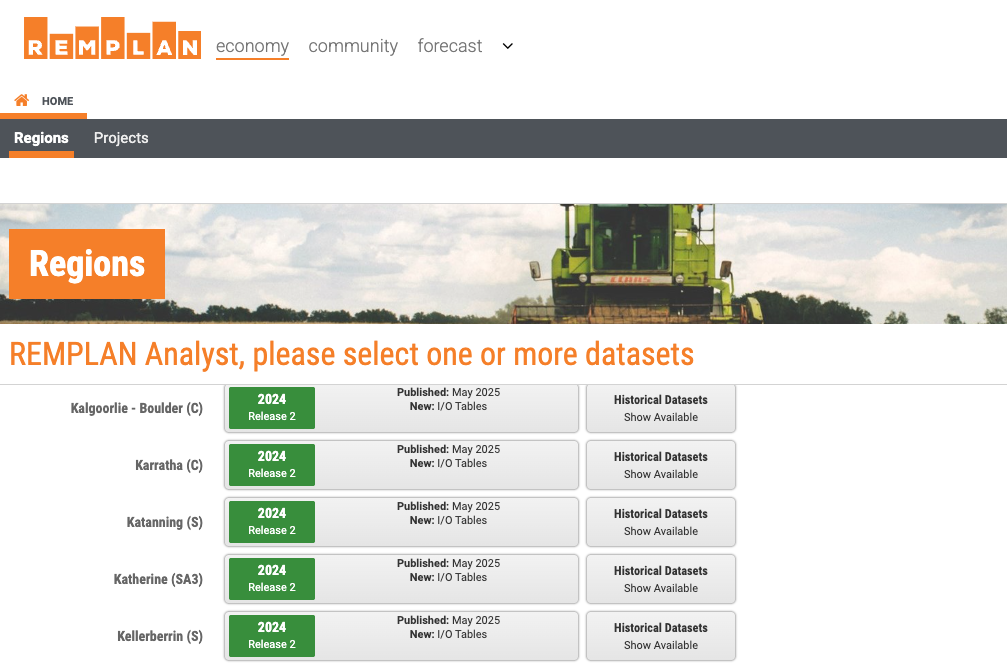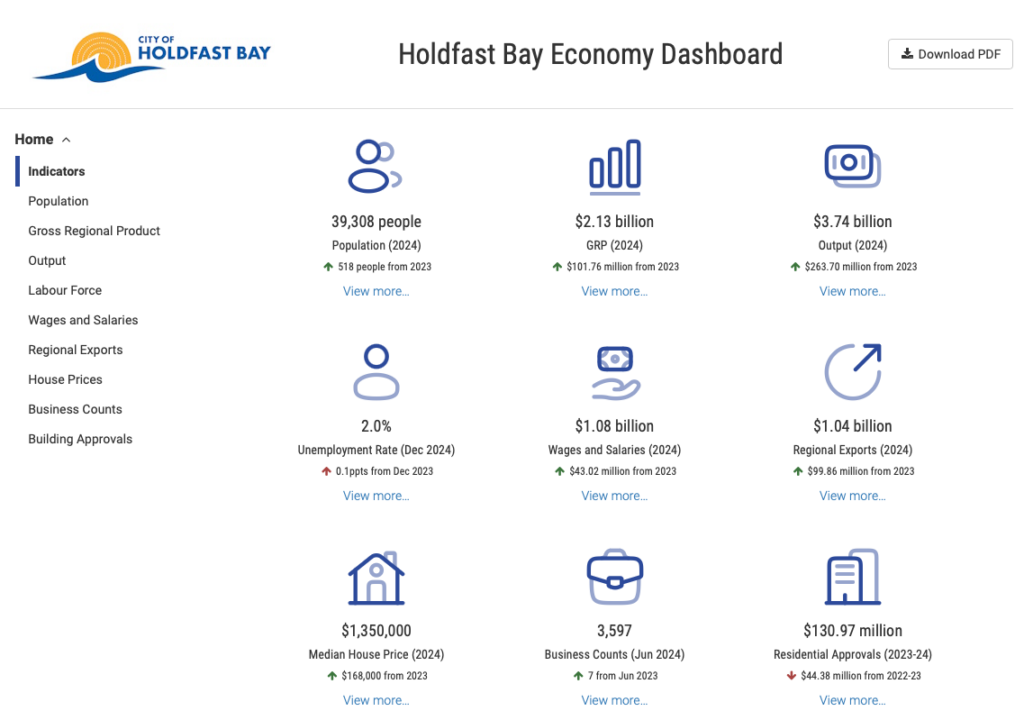22 May Updated Analysis and Insights for your Local Economy
REMPLAN’s economic data has been updated to incorporate the ABS’ recently released 2022-23 National Input-Output Tables and Tourism Research Australia’s 2024 tourism profile data. The data delivers new insights into industry sector productivity and performance, and has been published on REMPLAN’s public-access Economy profiles which are now available for all Australian local government areas. More detailed data and updated economic impact modelling can be accessed via the log in platform.

Australia’s changing economy – observations and themes from the latest update
The latest data reveals some notable shifts across the Australian economy, from resources to tourism and technology.
1. Tourism recovery continues
This release highlights that the post-COVID rebound in Australia’s tourism sector is alive and well. The Accommodation and Food Services experienced significant growth, fuelled by a surge in both domestic tourism and international visitation. A similar trend is visible in the Air and Space Transport sector, where increased demand has led to higher air travel prices.
2. Coal prices
The post-COVID surge in coal prices continued to influence the economy through to mid-2023. REMPLAN’s latest update reflects this with strong, sustained growth in Coal Mining sector estimates.
3. Lithium-driven growth in mineral mining
A similar upward trajectory is evident in the Non-Metallic Mineral Mining sector, driven largely by a rapid rise in lithium prices through 2022-23. Spodumene (a lithium ore) was a key export during this period, significantly boosting output this mining sector. While prices have moderated recently due to expanded supply, the demand points to the continuing rise of electric vehicles and other battery technology applications.
4. The Rise of AI
The transformative impact of artificial intelligence may also be reflected in this update. Following the late-2022 launch of ChatGPT, early 2023 saw unprecedented adoption of AI technologies — reaching subscription milestones faster than many leading technology platforms. Additionally, in the post-COVID digital economy, there has been an increase in the use of offshore data centres, along with growth in cybersecurity services demand. The growth in these emerging technologies is likely captured in the updated economic figures, through increased imports by ‘Internet Publishing, Broadcasting, Web Search, and Data Services’ within the Information Media and Telecommunications sector.
5. Weakening domestic supply-chains
For over 20 years the REMPLAN team have been applying annual releases of ABS Input-Output tables to our economic models. Over this period there is a clear trend of weakening domestic supply-chains.
In responding to economic downturns, typical fiscal policy responses by Australian government agencies include the targeting of ‘shovel ready’ construction projects. These projects tend to quickly create demand for goods and services, delivering flow-on supply-chain benefits. If supply-chains continue to weaken, will our fiscal policy responses be as effective in the future?
Economy Dashboards – Monitoring the Performance of your Economy
Do you need to monitor how your local economy is performing?
Are you required to report regularly on your local economy?
Each time we roll out a REMPLAN update, the repository of historical data builds. This is an increasingly valuable resource for understanding how our economies are changing. With a time series focus, the REMPLAN Economy Dashboards utilise this database. At the press of a button, the Dashboard generates the latest Economic Insights report.

REMPLAN Economy Dashboards deliver an intuitive and accessible interface for data analysis for a wide range of users. By leveraging the REMPLAN Economy Dashboard, localised data that matters most to you and your community becomes easier to monitor, share and report on.
Questions? Please call us on 1300 737 443 or contact us online.




No Comments